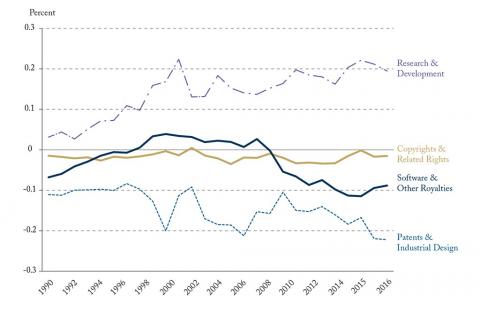From: Daniel Schwanen
To: Ministers of Finance and Industry, Science and Innovation
Date: December 20, 2017
Re: Canada Needs a Broader Approach to Fostering Innovation
Canada’s mediocre innovation performance calls for a broader policy approach. In my new report I examined the innovation challenges that Canada faces and suggest an integrated approach to letting innovation flourish in the broader economy, bringing tangible benefits to Canadians.
Canada is widely considered to be an innovation under-achiever, despite decades-long attempts to address this gap. The key unmet challenge of Canadian innovation policy today is ensuring the best possible environment for commercializing ideas. Of course, education, research and Canada’s ability to attract talent remain the fundamental building blocks of innovation, and can each be strengthened considerably. But it is time to move beyond the ‘spray and pray’ approach to one more focused on excellence, on allowing experimentation in the pursuit of public policy objectives, and on supporting entrepreneurship.
A successful innovation policy would build on Canada’s existing advantages. It would pay attention to the multitude of regulatory and other practices that result in governments blocking innovation with one hand, while promoting it with the other.
While the federal government’s superclusters initiative is a step in the right direction, it makes little sense to talk about building a nation of innovators while so many barriers to innovation-based economic activity remain in Canada.
Canadians generate many practical, innovative ideas but miss out on the significant benefits from exploiting those ideas globally. A striking juxtaposition highlighting the problem is that while Canada ranked eighth in the number of US patent grants in 2016 when calculated by the inventor’s country of residence, 58 percent of these patents were owned by companies outside Canada, up from 45 percent in 2005. The figure below illustrates the gap between our international R&D surplus – intellectual work being generated in Canada – and the international deficit in royalties, licences copyright and other intellectual property owned abroad and exploited in Canada. Stronger economic growth and higher standards of living would accrue to Canadians if we were also at the forefront of business growth and job creation based on exploiting such knowledge.
To remove barriers to innovation in Canada, an integrated approach should be based on four pillars:
- A greater focus on research and educational excellence, and on deploying and attracting related talent and skills, including those beyond scientific and engineering skills, such as marketing and business;
- A suite of trade, fiscal, regulatory and other policies and approaches to:
- Foster entrepreneurship and economic activity based on existing talent, skills, and research;
- Facilitate the risk-taking – and acceptance of risk-taking – that such activities entail;
- Remove unnecessary barriers to these activities.
- Innovation in the delivery of public services themselves; and
- A more goals-oriented approach to government support for business innovation that nevertheless relies more on market and other arm’s length mechanisms, as well as international collaboration in some areas, to achieve desired goals.
The ultimate motivation for wanting to improve Canada’s innovation performance is simple - to improve Canadians’ overall standards of living.
Figure: Canada’s International Balances in R&D Services and Payments for Use of IP, Share of GDP
Daniel Schwanen is the Vice President Research at the C.D. Howe Institute.
To send a comment or leave feedback, email us at blog@cdhowe.org.






